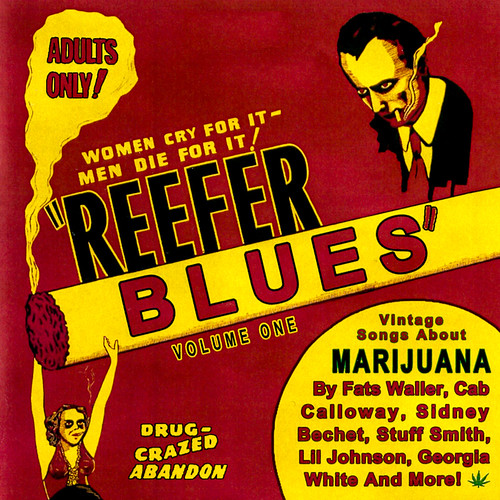Oh yes, the classic sound of jazz! But did you know it was influenced by weed!
The Jazz and Marijuana Revolution
In the early 20th century, cannabis became an integral part of the jazz scene, particularly in New Orleans’ Storyville district – the city’s infamous red light district where jazz music was born. Cannabis, referred to by various slang terms like “reefer”, “tea”, and “muggles”, helped jazz musicians play long into the night without exhaustion. Many musicians believed it enhanced their creativity and imagination, allowing them to produce more unique and innovative music.
Jazz Musicians and Cannabis Use

Many of the most famous jazz musicians of the era were known to be regular cannabis users, or “vipers” as they were called. This includes Louis Armstrong, Cab Calloway, Fats Waller, Billie Holiday, Lester Young, and Thelonious Monk, among others.
Armstrong in particular was a well-known viper who first tried cannabis in the 1920s and used it before performances. He spoke openly about its benefits, saying it was like “a sort of medicine” that provided “much better thoughts than one that’s full of liquor.”
The Criminalization of Jazz and Cannabis
The association between jazz music and cannabis use led white authorities to view both as threats. They launched racist campaigns to criminalize and stamp out the use of “marihuana”, which they saw as spreading a dangerous “voodoo music” among black and Mexican communities. New Orleans banned cannabis in 1923, with the rest of Louisiana following suit in 1927.
Despite the crackdown, jazz musicians continued to use cannabis, sometimes facing arrests like Louis Armstrong in 1931. However, the respect and appreciation for cannabis remained among the jazz community. As Armstrong said, “the respect for it (gage) will stay with me forever.”
How jazz musicians used cannabis in the early 20th century
In the early 20th century, jazz musicians extensively used cannabis as a source of inspiration and relaxation during their performances. Cannabis, known by various slang terms like “reefer” and “tea,” played a significant role in the jazz scene, particularly in New Orleans and other cultural districts where jazz flourished. Musicians like Louis Armstrong, Cab Calloway, Billie Holiday, Thelonious Monk, and many others were known to be regular cannabis users, often referred to as “vipers.” They believed that cannabis enhanced their creativity and helped them produce unique music. Jazz musicians would use slang terms like “tea,” “reefer,” and “grass” to refer to cannabis due to its vilification and impending criminalization at the time. Cannabis use was intertwined with the jazz culture of the 1920s and 1930s, with joints being sold outside tea pads or cannabis bars. Louis Armstrong, one of the most famous jazz musicians of all time, openly discussed his cannabis use, claiming it helped him relax and think more creatively. The relationship between jazz musicians and cannabis reflected a complex intertwining of cultural elements, creativity, and artistic expression during that era.
More information to read
https://dailytrojan.com/2020/02/07/to-be-blunt-cannabis-is-an-integral-part-of-jazz-history-in-america/
https://www.thcfarmer.com/threads/the-history-of-music-and-marijuana-part-one.71947/